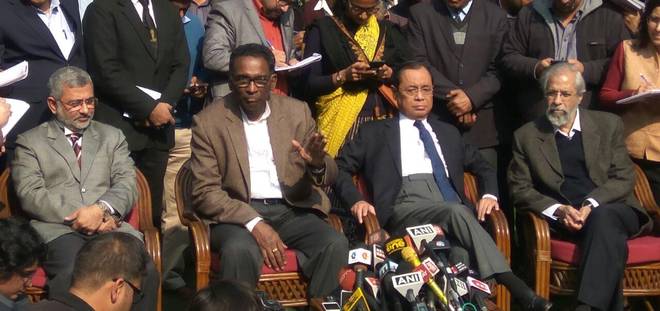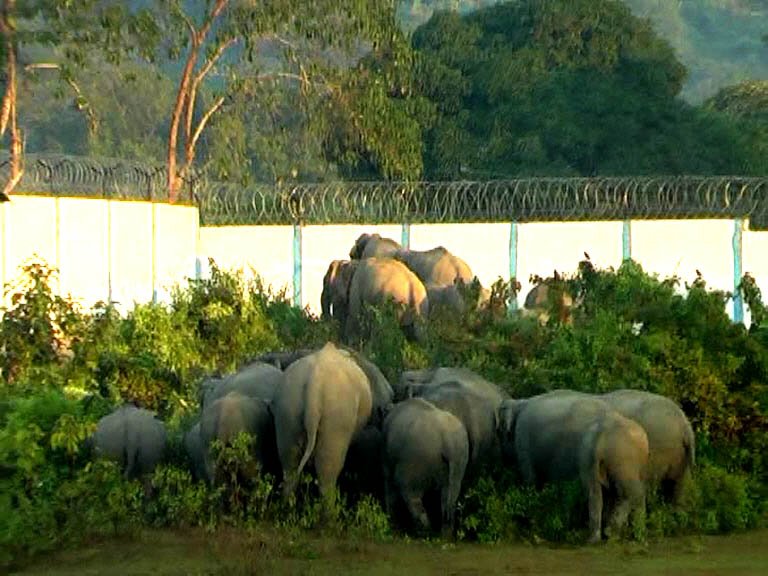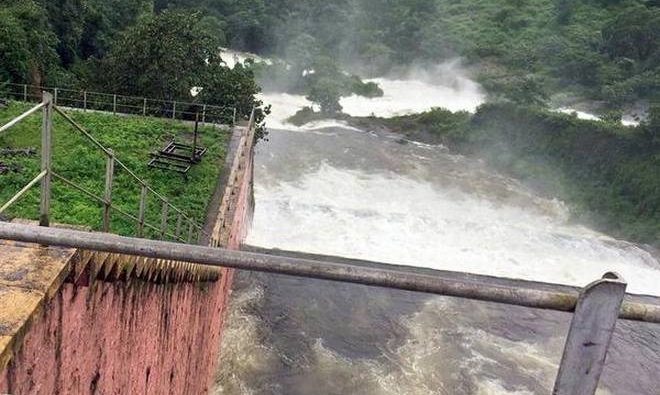Utsav Bains, the lawyer who represented a victim in the rape case against convicted self-styled godman Asaram Bapu, has claimed that “just a few days back” he was offered a bribe of Rs 1.5 crore to frame the Chief Justice of India Ranjan Gogoi in a sexual harassment case.
While opinions remain sharply divided in the legal fraternity on Chief Justice Ranjan Gogoi’s handling of the sexual harassment allegations leveled against him by his former staffer, the embarrassing episode involving the country’s highest judicial authority has now got a new twist.
Utsav Bains, the lawyer who represented a victim in the rape case against convicted self-styled godman Asaram Bapu, has claimed that “just a few days back” he was offered a bribe of Rs 1.5 crore to frame the Chief Justice in sexual harassment case. Though Bains has refused to reveal the identity of the person who approached him, he claims that he had turned the offer down as he suspected a “larger conspiracy to make the CJI resign”.
The dramatic claim by Bains comes in wake of Saturday’s unprecedented crisis that has engulfed the Supreme Court with the Chief Justice of India himself being accused of sexual harassment and criticised for convening an urgent hearing to essentially dismiss the allegations, attribute motives to his accuser and unambiguously point at a plot to “deactivate the office of the CJI”.
While Bains has, so far, refused to speak to the media on his claims, he wrote a long post on Saturday evening on his Facebook page to describe how he was reportedly approached to “frame CJI in the sexual harassment case”.
Withholding the identity of the person who made the offer to him, Bains claims he was asked to appear as the lawyer of the former staffer who has leveled the allegations against the Chief Justice of India and to help in organising a press conference on the issue at Delhi’s Press Club. Bains adds that when he refused to oblige, the person claimed that he was a relative of the woman who had accused Asaram Bapu in a rape case – Bains had appeared pro bono for the rape survivor against Asaram and the controversial godman was found guilty in the case last year – but failed to explain his relationship with the former Supreme Court staffer who has now leveled allegations against Chief Justice Gogoi.
“He couldn’t satisfactorily reply as to what was his relationship with the ex-SC staffer and then suddenly offered me 50 lacs (sic) as my legal fees if I agreed and again asked me specifically to organise a press conference at the PCI,” Bains wrote. He added further that when he refused to accept the bribe or file the case against the Chief Justice of India, the bribe offer was enhanced to Rs 1.50 crore.
Having refused the offer, Bains says he asked the person to leave his office and then made his own enquiries with “reliable sources in Delhi” following which he was convinced that there was a “larger conspiracy to make the CJI resign” and that the ‘kingpins’ of this plot are “many Delhi based Supreme Court fixers or those who engage in cash for judgments”.
Bains says that he had gone to the residence of Chief Justice Gogoi at around 7 pm on Friday to personally inform him about the goings on but was informed that the CJI was not at home. Bains says the CDR tower location of his phone can be checked to verify his claim of visiting the Chief Justice’s residence at 10, Tees January Marg.
It may be recalled that reports of a sexual harassment case had begun circulating in the media on Friday and by evening a number of web portals had sent enquiries to the Chief Justice of India to seek his version on the allegations by his former staffer.
Bains said further that he had also asked a journalist who covers the Supreme Court to help arrange a meeting with the CJI about “an important subject” and was also planning to meet advocates Kamini Jaiswal and Prashant Bhushan, on Saturday, in this regard.
However, by Saturday morning, news of the sexual harassment allegations against the Chief Justice had already made headlines and the CJI, on a reference by Solicitor General Tushar Mehta, had convened an urgent hearing on the matter. At the hearing by a hurriedly constituted special bench headed by CJI Gogoi himself and comprising Justices Arun Mishra and Sanjiv Khanna, the judges along with Attorney General KK Venugopal and Solicitor General Mehta collectively portrayed the allegations as a big conspiracy and an “attack on the independence of the judiciary” while stating that an appropriate bench of the court will be constituted to adjudicate on the matter soon.
Bains says he is preparing to “file a detailed affidavit” before the Supreme Court narrating his side of the alleged conspiracy “along with evidences of the conspiracy against the CJI by a lobby of disgruntled judges, SC fixers, corporate scamsters and a few corrupt politicians” who have “meticulously planned” to force the CJI to resign.
The claims made by Bains do not take away from the moral and ethical questions that arise out of Saturday’s unprecedented events at the top court – should the Chief Justice have convened a hearing of a matter that involves allegations against himself, by attributing motives to his accuser from the platform of the Supreme Court did the CJI scuttle due process of law, shouldn’t the special bench have comprised at least one woman judge of the top court or judges more senior than Justices Mishra and Khanna, etc. However, they do make the ongoing scandal all the more piquant.
Expectedly, all eyes will now be on how the Supreme Court deals with this matter in the coming days but what is certain, for now, is that Saturday’s events were only the beginning of yet another dark chapter in the recent history of the top court which, a little over a year ago, had been plunged into a crisis when its four seniormost judges – including Justice Gogoi – had raised a very public banner of revolt against the then Chief Justice of India, Dipak Misra.




